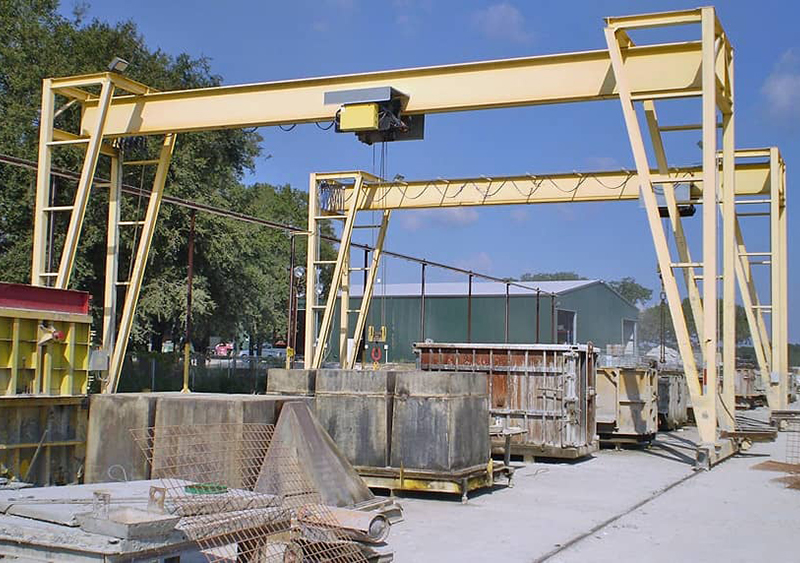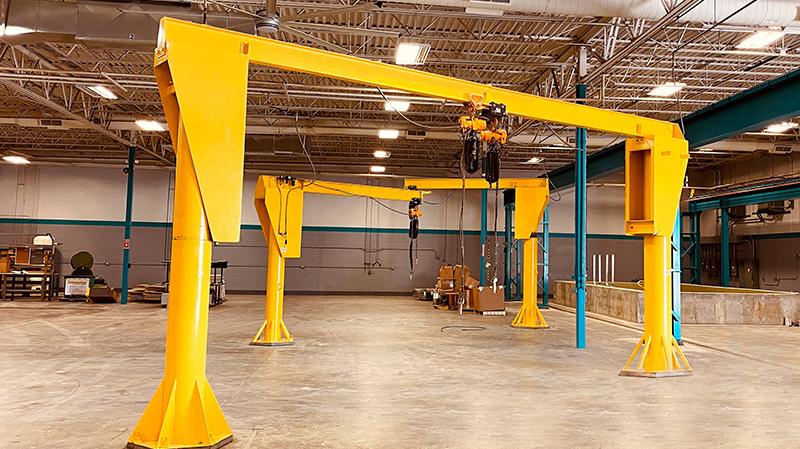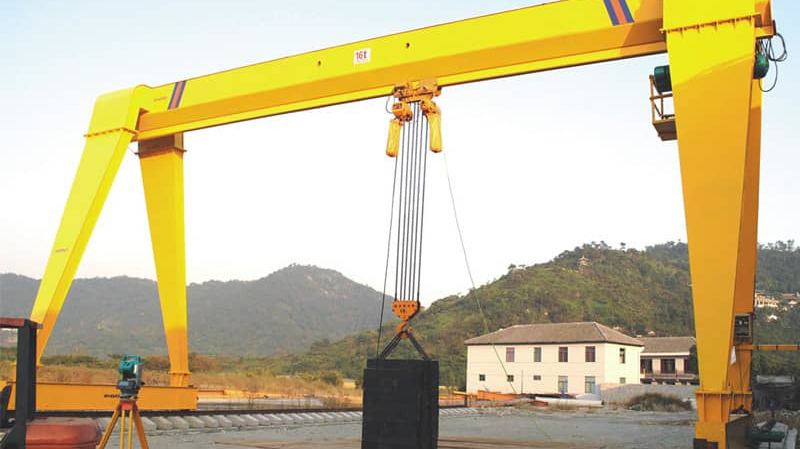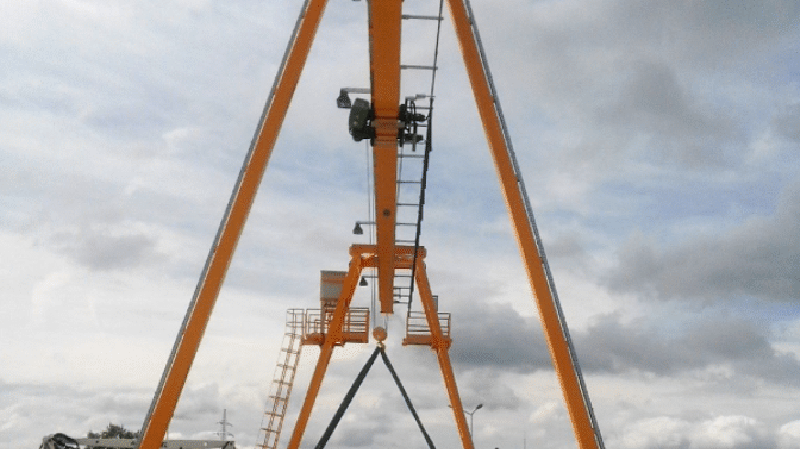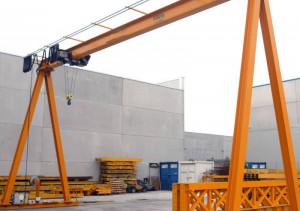
Outdoor Overhead Crane Gantry Crane For Marble Block
Product Details and Features
A gantry crane is a type of aerial lift which has a boom supported on stowaway legs, moving along wheels, tracks, or rail systems carrying the boom, slings, and hoist. An overhead crane, commonly called a bridge crane, is shaped like a moving bridge, while a gantry crane has the overhead bridge supported with its own frame. Girders, beams, and legs are essential parts of a gantry crane and distinguish it from an overhead crane or a bridge crane. If a bridge is supported rigidly by two or more legs running along two fixed tracks at ground level, then the crane is called either a gantry (USA, ASME B30 series) or a goliath (UK, BS 466).
A gantry crane is a type of aerial crane that has either a single-girder configuration or double-girder configuration supported on legs which are either moved by wheels or on track or rail systems. Single-girder gantry cranes employ various lifting jacks depending on the type of job, and may also employ European-style jacks. The lifting capability of a double-girder gantry crane can be hundreds of tons, and the type may be either a half-girder design or a double-leg with one leg in the form of the skeleton. A smaller, portable gantry crane can do the same types of jobs that the jib crane does, but it can move around your facility when your company grows and you start optimizing and layout warehouse spaces.
Application
Portable gantry systems also may provide greater flexibility than a jib or stall crane. Different types of overhead cranes include gantry, jib, bridge, workstation, monorail, overhead, and sub-assembly. Overhead cranes, including gantry cranes, are necessary in many production, maintenance, and industrial work environments where efficiency is required to lift and move heavy loads. Overhead deck cranes are used for lifting and moving materials from one place to another as safely and efficiently as possible.
Double-girder bridge cranes are composed of two bridge beams attached to the track, and are usually provided with overhead electrical tether-rope elevators, but they may also be provided with overhead electrical chain elevators depending on the application. Available in single-leg or conventional double-leg designs, the Spanco PF-series of gantry crane systems can be equipped with powered traverse. The following requirements apply to all of the industrial cranes used on site, including automated, cockpit-operated, gantry, semi-gantry, wall, jib, bridge, etc.
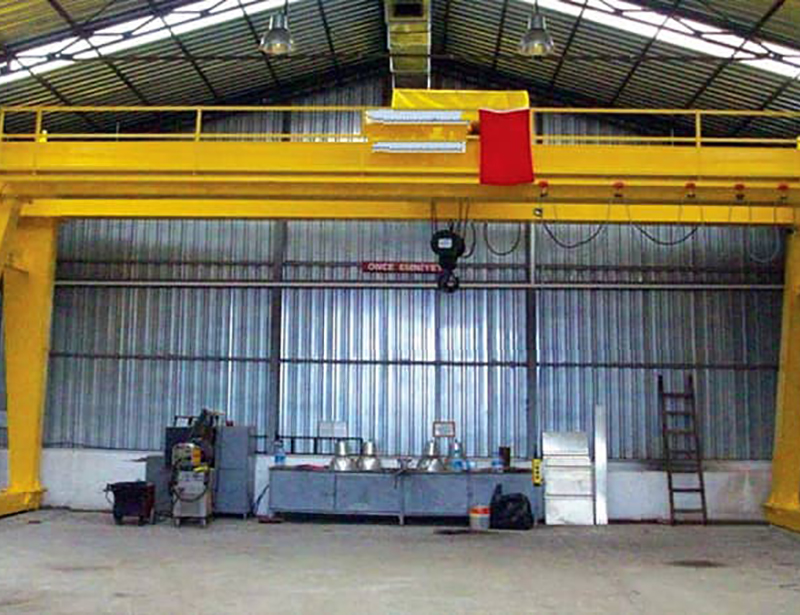
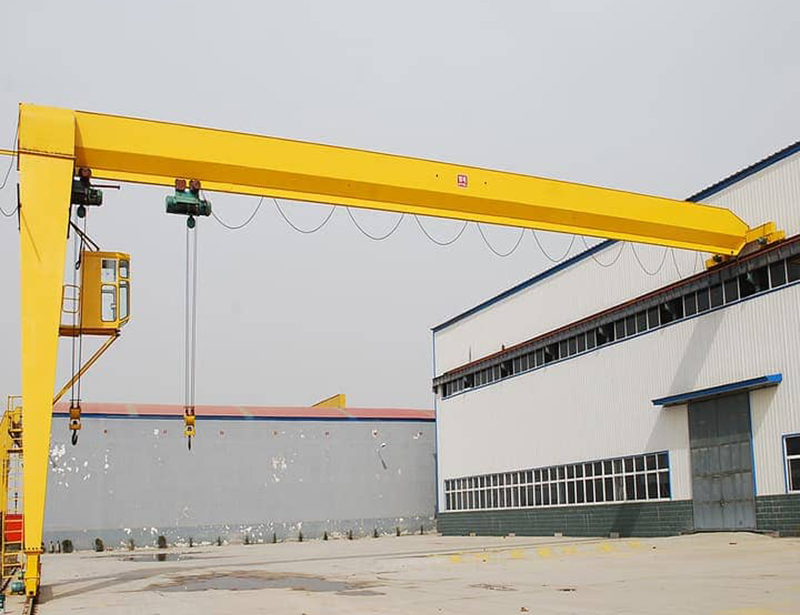

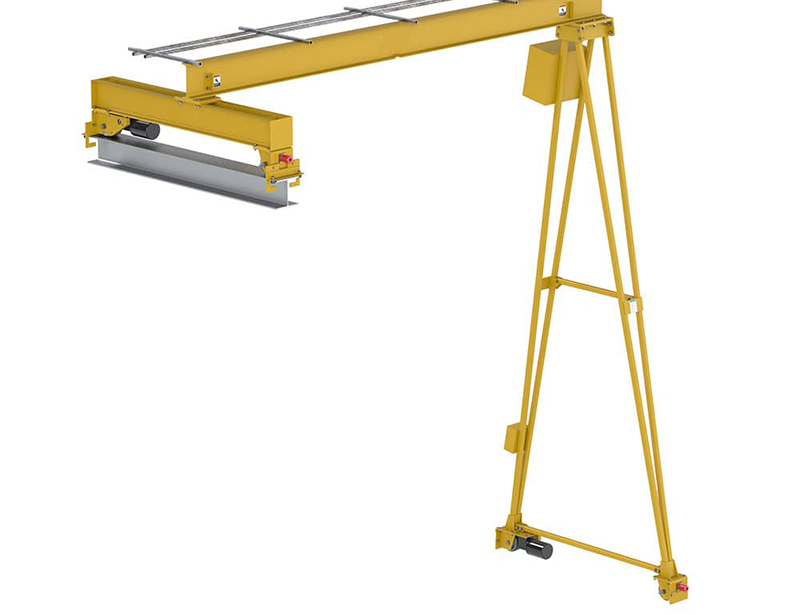
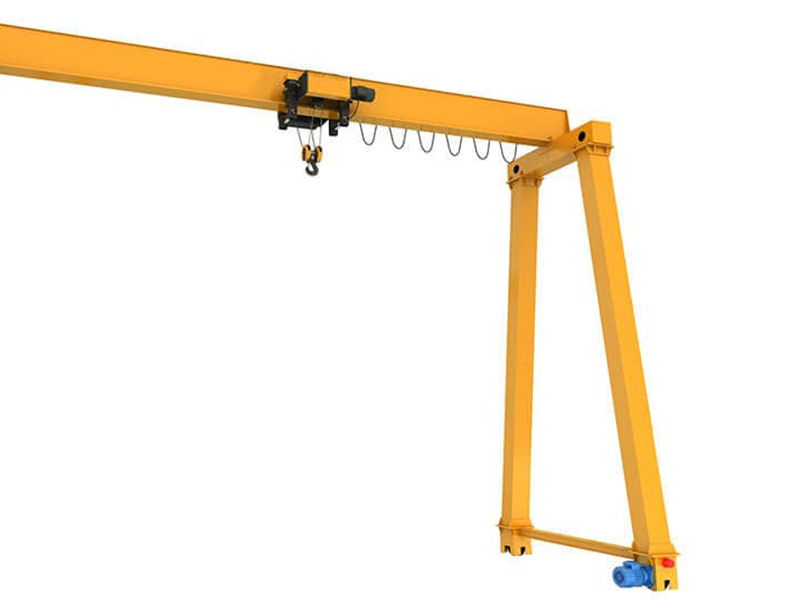
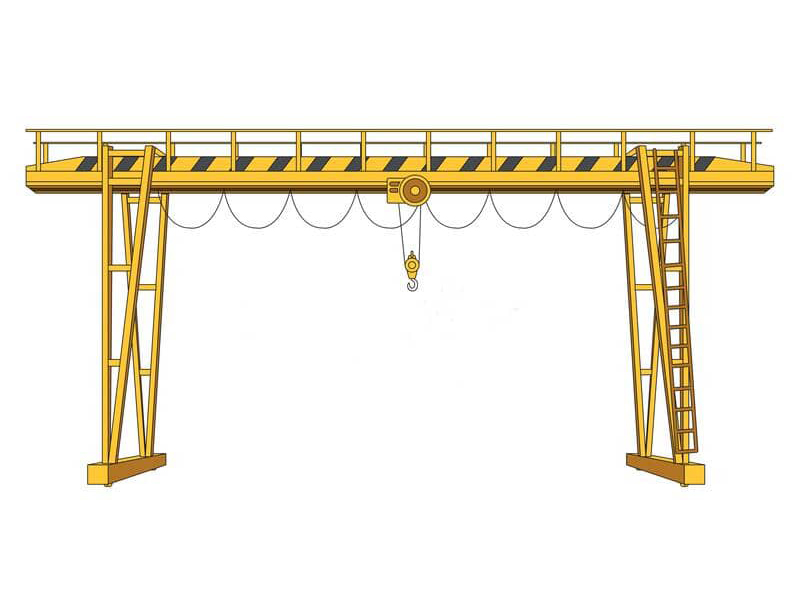
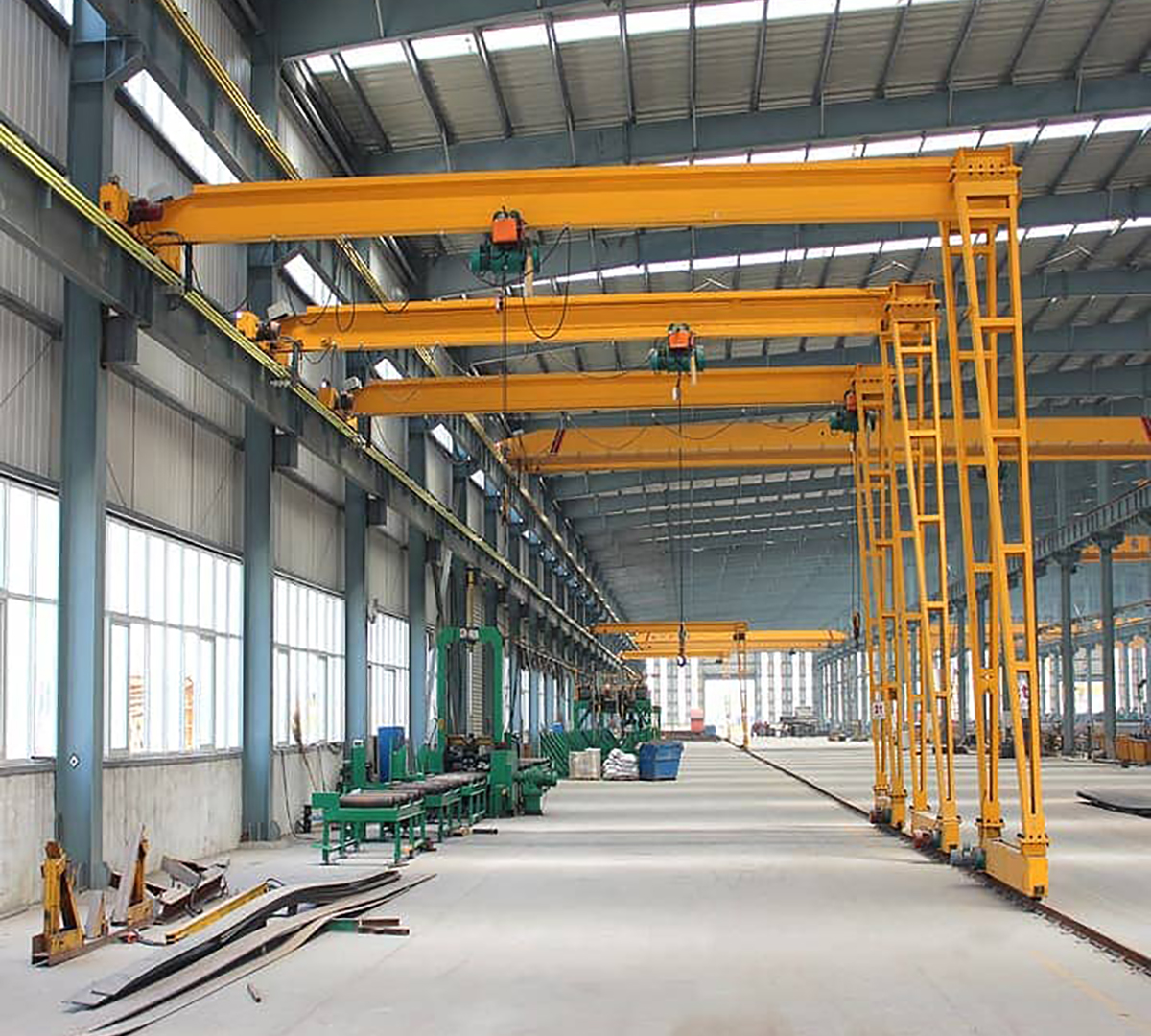
Product Process
A large amount of times, the overhead bridge crane will also be tracked, so that the entire system can travel either frontwards or backwards across a building. Bridge cranes are built within the structure of the building, and usually use the structures of the building as their supports. You can operate bridge cranes at pretty fast speeds, but with gantry cranes, typically, loads are moved at slower crawl speeds. Single-girder bridge cranes still have a good amount of capacity for lifting, when compared with some of the other cranes, but they typically max out around 15 tons of capacity.

